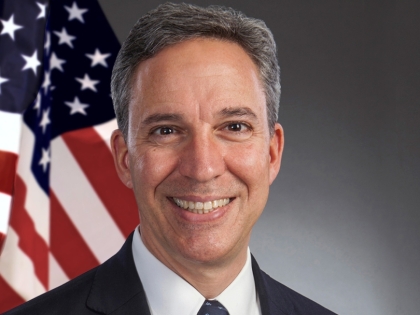
Senator Martins: New Measures to Combat Heroin Epidemic Signed Into Law
Jack M. Martins
July 11, 2014
-
ISSUE:
- Controlled Substances
Senator Jack M. Martins (R-Mineola) announced that legislation to combat the growing heroin and opioid abuse epidemic has been signed into law by Governor Andrew Cuomo. Senator Martins was a sponsor of the legislation in the Senate.
“Heroin and opioids are affecting every single community on Long Island. Solving this crisis requires a comprehensive, aggressive approach. Expanding treatment options, stregthening penalties for the drug dealers who are poisoning our communities, and expanding education for the children who are the number one target of this epidemic will help save lives. I am pleased that we could work together in a bipartisan manner to protect our communities,” said Senator Martins.
Heroin related deaths have reached an all-time high on Long Island. There were approximately 240 heroin related deaths over the last two years on Long Island. Additionally, the Long Island Council on Alcoholism and Drug Dependency (LICADD) has seen the number of individuals in treatment increase from just under 100 families a month for treatment in 2009 to more than 850 a month in 2014. According to LICADD, 80 percent of that increase is due to opiate and heroin addiction.
The new laws include:
Improved Measures to Support Addiction Treatment: The legislation includes the following provisions to help support treatment of individuals with substance addiction problems:
- Enables individuals requiring treatment to have access to an expedited appeals process and ensures that they are not denied care while the appeals process is underway.
- Improves access to care by requiring insurers to use recognized, evidence-based and peer-reviewed clinical review criteria, approved by the State Office of Alcoholism and Substance Abuse Services (OASAS), when making decisions regarding the medical necessity of treatment. This will require insurers to consistently cover the appropriate level of treatment for patients suffering from substance use disorders.
- Ensures medical necessity decisions are made by medical professionals who specialize in behavioral health and substance use.
- Creates a new demonstration program aimed at designing a new model of care that would divert patients who do not need in-hospital detoxification, but still need treatment, to appropriate services and facilities. This program would provide alternative short term community based treatment, avoiding unnecessary emergency room costs as well as enabling OASAS to study the effectiveness of the new approaches to address the needs of individuals suffering with substance addiction.
- Directs OASAS to create a wraparound services demonstration program to provide services to adolescents and adults for up to nine months after the successful completion of a treatment program. These services would be in the form of case management services that address education, legal, financial, social, childcare, and other supports. These services will help former patients improve their quality of life and greatly reduce the likelihood of relapse.
- Provides that young people alleged to be suffering from a substance use disorder – which could make the youth a danger to himself or herself or others – can be assessed by an OASAS certified provider as part of Person In Need of Supervision (PINS) diversion services.
New Penalties to Help Crack Down on Illegal Drug Distribution: The legislation includes the following provisions to enable the State and law enforcement to better crack down on the distribution of heroin, opioids, and illegal prescription drugs:
- Creates a new crime in the penal code of “fraud and deceit related to controlled substances” to crack down on doctor shopping, criminalizing behavior by those individuals who obtain or attempt to obtain a controlled substance or a prescription by misrepresenting themselves as a doctor or pharmacist, or presenting a forged prescription.
- Adds the “criminal sale of a prescription for a controlled substance or of a controlled substance by a practitioner or pharmacist” as a designated offense for purposes of obtaining eavesdropping warrants as well as adding the offense as a “criminal act” for the purposes of prosecuting enterprise corruption cases. These small but significant reforms will give law enforcement and prosecutors the ability to utilize eavesdropping warrants to further fully investigate crimes involving the distribution of controlled substances, as well as empower law enforcement to further prosecute organized activity related to prescription drug trafficking in New York State.
- Grants the Department of Health (DOH)’s Bureau of Narcotic Enforcement expanded access to criminal histories to aid its investigations of rogue prescribers and dispensers.
- Increases the penalties for the criminal sale of a controlled substance by a pharmacist or practitioner by making the crime a class C felony.
Improved Accessibility to Naloxone Anti-Overdose Kits to Help Save Lives: The legislation includes the following provisions to improve accessibility and ensure the proper use of naloxone – an overdose antidote – when administered:
- Requires that every naloxone anti-overdose kit include informational cards with the important information on how to recognize symptoms of an overdose; what steps to take, including calling first responders; and how to access services through OASAS.
Expanded Public Education Campaigns to Prevent Opioid and Heroin Use: The legislation includes the following provisions to expand public awareness campaigns to help educate New Yorkers – particularly students and young people – about the dangers of opioid and heroin use:
- Directs OASAS to undertake a public awareness and educational campaign utilizing public forums, media (social and mass) and advertising to educate youth, parents, healthcare professionals and others about the risks associated with heroin and opioids, how to recognize signs of addiction and the resources available to deal with these issues.
- Directs the State Education Commissioner to update the drug abuse curriculum every three years so that students have the most current and up-to-date information on coping with drug abuse and other substance abuse problems.


